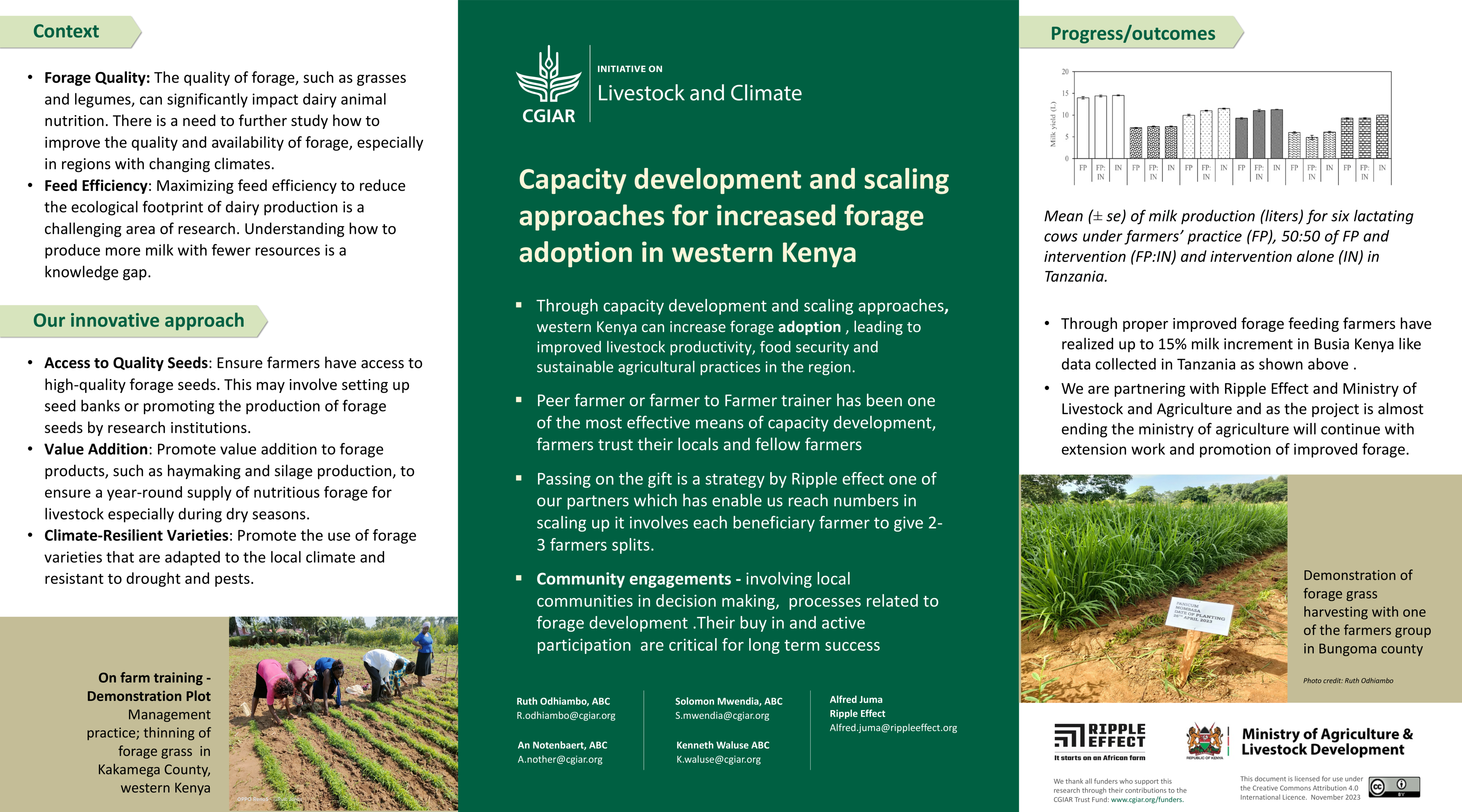
Description
Description
- Through capacity development and scaling approaches, western Kenya can increase forage adoption , leading to
- improved livestock productivity, food security and sustainable agricultural practices in the region.
- Peer farmer or farmer to Farmer trainer has been one of the most effective means of capacity development, farmers trust their locals and fellow farmers
- Passing on the gift is a strategy by Ripple effect one of our partners which has enable us reach numbers in scaling up it involves each beneficiary farmer to give 2- 3 farmers splits.
- Community engagements - involving local communities in decision making, processes related to forage development .Their buy in and active participation are critical for long term success
Comments
Are you seeding spontaneous adoption? Are you monitoring adoption?
Is it a peer to peer learning process?
What is the base line, and variability, for the 15% milk increment (it may be in the graph but I can't see it)?
How could this fit with pioneer farmers? How do you select the technologies and identify the lead/peer farmers? What is the sustainability (will farmers keep on getting support in the form of seeds etc)?
How are the quality of the seeds being monitored, is there involvement of the private sector when it comes to supply of seeds? Also, in the drylands, there are scattered instances of groups who have been either identified through specific donor projects or through community initiated groups who are producing feeds and forage/hay, which are seasonal. How can one build capacity of these groups - again this might be a market- linkage question, but is relevant since during climatic shocks, there is always a shortage of feeds and forage, to the extent of them being so expensive that even payouts given through insurance for instance are not enough.
Add new comment